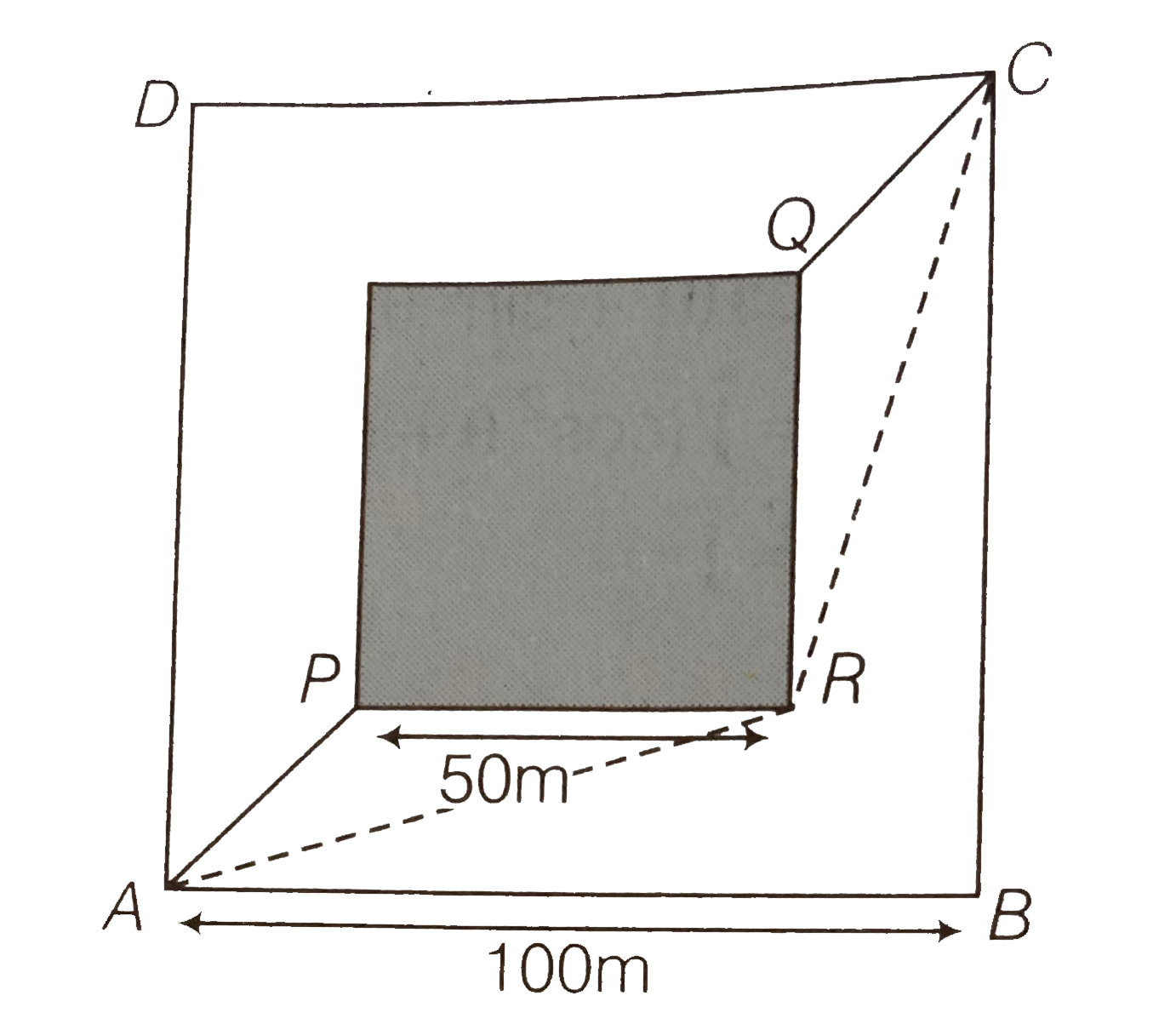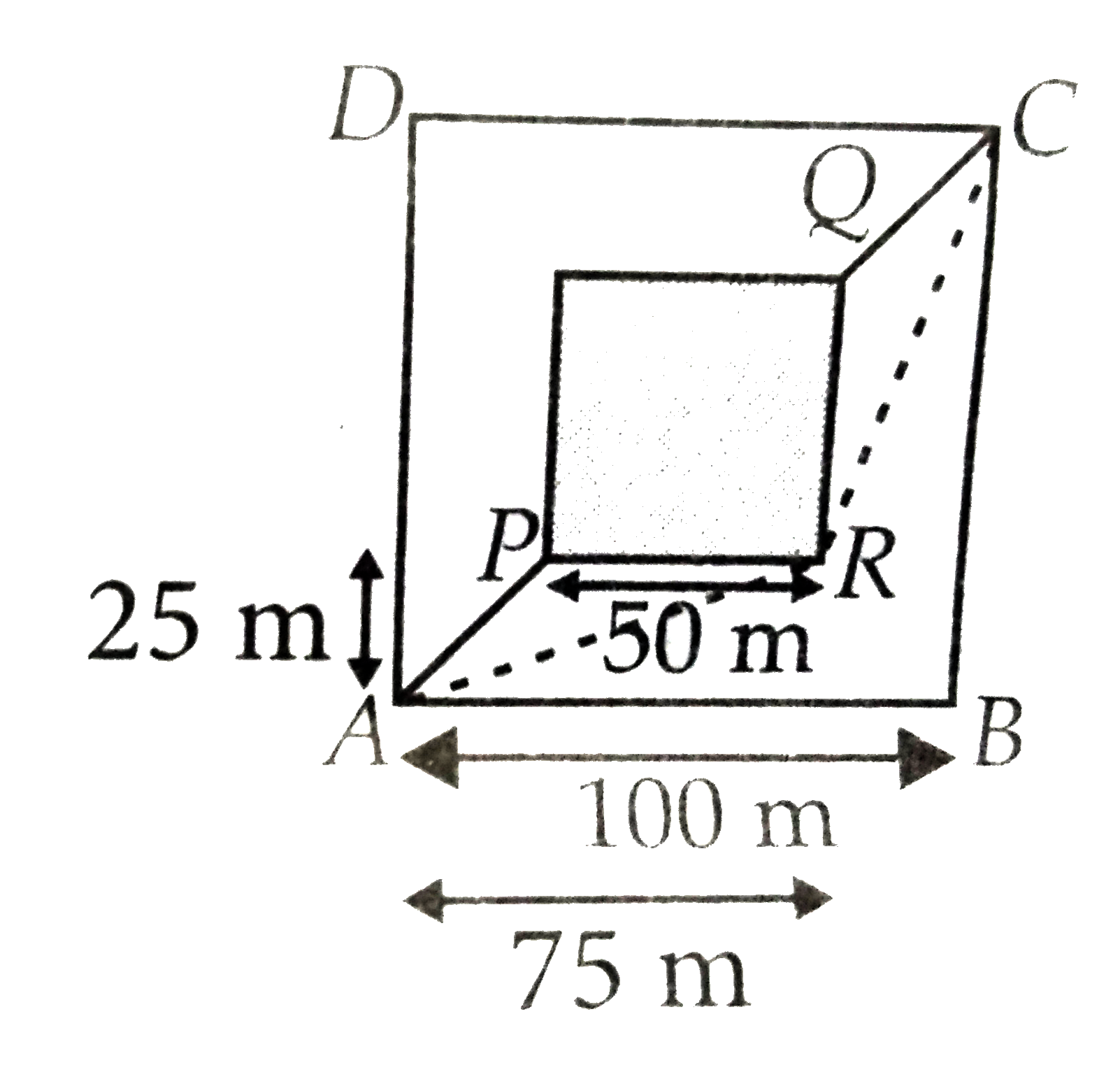A man wants to reach from A to the opposite corner of the square C. The sides of the square are 100 m. A central square of 50m×50m is filled with sand. Outside this square, he can walk at a speed 1 m/s. In the central square , he can walk only at a speed of v m/s (v<1). What is smallest value of v for which he can reach faster via a straight path through the sand than any path in the square outside the sand ?

A
0.18 m s−1
B
0.81 m s−1
C
0.5 m s−1
D
0.95 m s−1
Video Solution
Text Solution
The correct Answer is:B
AC=√(100)2+(100)2=100√2m
PQ=√(50)2+(50)2=50√2m
AP=AC−PQ2=100√2−50√22
=25√2m
QC=AP=25√2m,AR=√(75)2+(25)2=25√10m
RC=AR=25√10m
Consider the straight line APQC through the sand. Time taken to go from A to C via this path
Tsand=AP+QC1+PQv
=25√2+25√21+50√2v=50√2[1v+1]
The shortes path outside the sand will be ARC. Time taken to go from A to C via this path
Toutside=AR+RC1=25√10+25√101=50√10
∵Tsand<Toutside∴50√2[1v+1]<50√10
⇒1v+1<√5or1v<√5−1orv>1√5−1≈0.81ms−1

|
Topper's Solved these Questions
- MOTION IN A PLANE BOOK - NCERT FINGERTPS ENGLISHCHAPTER - MOTION IN A PLANE EXERCISE - Higher Order Thinking Skills
8 Videos
- MOTION IN A PLANE BOOK - NCERT FINGERTPS ENGLISHCHAPTER - MOTION IN A PLANE EXERCISE - NCERT Exemplar
10 Videos
- MOTION IN A PLANE BOOK - NCERT FINGERTPS ENGLISHCHAPTER - MOTION IN A PLANE EXERCISE - Uniform Circular Motion
14 Videos
- MECHANICAL PROPERTIES OF SOLIDSBOOK - NCERT FINGERTPS ENGLISHCHAPTER - MECHANICAL PROPERTIES OF SOLIDSEXERCISE - Assertion And Reason
15 Videos
- MOTION IN A STRAIGHT LINEBOOK - NCERT FINGERTPS ENGLISHCHAPTER - MOTION IN A STRAIGHT LINEEXERCISE - NCERT Exemplar
6 Videos
Similar Questions
Knowledge Check
The area of a square is 1 sq. m Express the area of this square is sq. mm.
A1,00,00,000 sq mmB10,00,000 sq mmC1,00,000 sq mmD20,00,000 sq mm
Find the area of a square of side 14m.
View SolutionFind the area of a square of side 8 m.
View SolutionFind the area of a square plot of side 8 m.
View SolutionFind the side of the square whose perimeter is 20 m.
View SolutionArea of a square plot is 2304m2. Find the side of the square plot.
View SolutionFind
a. the area of a square with side 7 m.
b. the area of a square with perimeter 56 m.
View SolutionSum of the areas of two squares is 640m2 . If the difference of their perimeters is 64m, find the sides of the two squares.
View Solution
